USA, 8 min
Directed by: John Hubley, Faith Hubley
Starring: Emily Hubley (voice), Georgia Hubley (voice)
 John and Faith Hubley shared a fruitful career in the field of animation, and were awarded three Oscars for Moonbird (1959), The Hole (1962) and Herb Alpert and the Tijuana Brass Double Feature (1966), respectively, as well as four further nominations. Windy Day (1968) was produced in a similar manner to many of their cartoons – the animation was built around the pre-recorded conversation of two people. In this case, it is the directors' young children, Emily and Georgia Hubley, who carry on a free-wheeling exchange of dialogue that feels natural and spontaneous. One daughter wants to act out a medieval fairy-tale, but the other is hesitant, and the conversation switches topics frequently and haphazardly, even touching on the mature concepts of love, marriage, dreams, life and death. The two girls speak of such ideas with enthusiasm and naive innocence, but their conclusions are surprisingly insightful, and the animation almost struggles to keep up with their rapidly-switching topics of discussion.
John and Faith Hubley shared a fruitful career in the field of animation, and were awarded three Oscars for Moonbird (1959), The Hole (1962) and Herb Alpert and the Tijuana Brass Double Feature (1966), respectively, as well as four further nominations. Windy Day (1968) was produced in a similar manner to many of their cartoons – the animation was built around the pre-recorded conversation of two people. In this case, it is the directors' young children, Emily and Georgia Hubley, who carry on a free-wheeling exchange of dialogue that feels natural and spontaneous. One daughter wants to act out a medieval fairy-tale, but the other is hesitant, and the conversation switches topics frequently and haphazardly, even touching on the mature concepts of love, marriage, dreams, life and death. The two girls speak of such ideas with enthusiasm and naive innocence, but their conclusions are surprisingly insightful, and the animation almost struggles to keep up with their rapidly-switching topics of discussion.Animation has always been the ideal medium for converting into visuals the free-association of human thoughts and interaction. Ideas and subject matter spontaneously change and switch back again, and the mind repeatedly conjures up fantastic flights of imagination and association. Like leaves on a breeze, thoughts and dreams materialise seemingly out of thin air, carving out random and erratic paths. Caroline and Frank Mouris' Frank Film (1973) employed a similar idea, instead animating with collages of magazine photographs. More recently, John Raskin's I Met the Walrus (2007) ascribed visual illustrations to an archival interview with the late John Lennon. The Hubleys' Windy Day takes together the dreams and aspirations of their two young daughters and converts them into a visual fairy-tale, a vivid meditation on the nature of life and innocence. At the 1969 Academy Awards, John and Faith Hubley lost out to the similarly-titled Winnie the Pooh and the Blustery Day (1968), which was awarded posthumously to Walt Disney.
7/10
 I'd previously only been familiar with animator Ivan Ivanov-Vano through this collaborations with Yuriy Norshteyn, but he was quite a prominent figure in the field of Soviet animation, active for nearly sixty years from the 1920s. In fact, he is often affectionately termed the "Patriarch of Soviet animation." A Strange Voice (1949) is a breathtakingly beautiful example of the master's craft, despite serving propagandistic purposes. By the 1940s, Soviet artists at Soyuzmultfilm studio had been influenced considerably by the American work of Walt Disney, and thus their animation has a quiet, realistic style that is far removed from the more unique (and, by then, obsolete) cartoon designs that had originated in the Soviet Union {see Bazaar (1934), and you'll know what I mean}. Given the degree to which Soyuzmultfilm owed its new style to American animators, it's rather ironic that this particular cartoon condemns the work of foreign artists, albeit in the guise of a pleasant and amusing cartoon made to appeal to Russian youngsters.
I'd previously only been familiar with animator Ivan Ivanov-Vano through this collaborations with Yuriy Norshteyn, but he was quite a prominent figure in the field of Soviet animation, active for nearly sixty years from the 1920s. In fact, he is often affectionately termed the "Patriarch of Soviet animation." A Strange Voice (1949) is a breathtakingly beautiful example of the master's craft, despite serving propagandistic purposes. By the 1940s, Soviet artists at Soyuzmultfilm studio had been influenced considerably by the American work of Walt Disney, and thus their animation has a quiet, realistic style that is far removed from the more unique (and, by then, obsolete) cartoon designs that had originated in the Soviet Union {see Bazaar (1934), and you'll know what I mean}. Given the degree to which Soyuzmultfilm owed its new style to American animators, it's rather ironic that this particular cartoon condemns the work of foreign artists, albeit in the guise of a pleasant and amusing cartoon made to appeal to Russian youngsters. The idea of creating visuals to match existing music was certainly not a new one, either in animation {see Disney's wonderful Fantasia (1940)} or live-action {see Jean Mitry's Pacific 231 (1949)}. With Blinkity Blank (1955), offbeat Canadian filmmaker Norman McLaren offers his own bizarre take on the technique, matching simple two-dimensional images (etched directly onto the cell print) to some classy jazz music by Maurice Blackburn. The idea, I must admit, works better in theory than in execution. I liked how McLaren attempted to replicate the subtle musical melodies using purely visual cues, in effect the closest a deaf person will ever get to hearing the music for himself. But he doesn't quite pull it off. McLaren's primitive etched outlines, depicting anything from birds to umbrellas, communicate the tempo of the music, but not the emotion. It takes a masterpiece like Fantasia, with its breathtaking Technicolor animation and gentle pacing, to achieve this aim most completely.
The idea of creating visuals to match existing music was certainly not a new one, either in animation {see Disney's wonderful Fantasia (1940)} or live-action {see Jean Mitry's Pacific 231 (1949)}. With Blinkity Blank (1955), offbeat Canadian filmmaker Norman McLaren offers his own bizarre take on the technique, matching simple two-dimensional images (etched directly onto the cell print) to some classy jazz music by Maurice Blackburn. The idea, I must admit, works better in theory than in execution. I liked how McLaren attempted to replicate the subtle musical melodies using purely visual cues, in effect the closest a deaf person will ever get to hearing the music for himself. But he doesn't quite pull it off. McLaren's primitive etched outlines, depicting anything from birds to umbrellas, communicate the tempo of the music, but not the emotion. It takes a masterpiece like Fantasia, with its breathtaking Technicolor animation and gentle pacing, to achieve this aim most completely.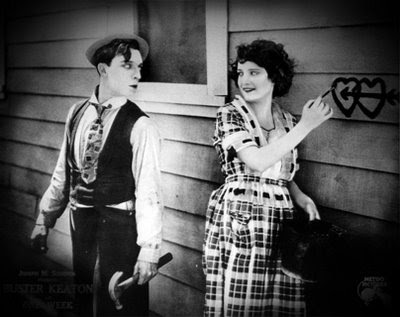 One Week (1920) was the first of Buster Keaton's independent two-reelers, though The High Sign (1921) was filmed first and shelved until the following year. The story starts out where most romantic comedies end: with a picturesque wedding ceremony, during which adoring relatives toss confetti and, oddly, second-hand footwear. The lucky groom (Keaton) and his bride (Sybil Seely) strike out for their new home, purchased by a well-meaning uncle. Of course, only in a Keaton short must the husband and wife construct their own house, utilising a do-it-yourself kit that goes awry when the bride's former lover switches the numbers around. The resultant dwelling would not have looked out of place in The Cabinet of Dr. Caligari (1920), though Keaton is evidently proud of his handiwork, and is thus prepared to overlook the most minor of blunders (such as having the front door on the second-floor). This short served as a trial-run of sorts for the feature Steamboat Bill, Jr. (1928), for here we see an early version of Keaton's famous "saved-by-the-window" falling wall stunt.
One Week (1920) was the first of Buster Keaton's independent two-reelers, though The High Sign (1921) was filmed first and shelved until the following year. The story starts out where most romantic comedies end: with a picturesque wedding ceremony, during which adoring relatives toss confetti and, oddly, second-hand footwear. The lucky groom (Keaton) and his bride (Sybil Seely) strike out for their new home, purchased by a well-meaning uncle. Of course, only in a Keaton short must the husband and wife construct their own house, utilising a do-it-yourself kit that goes awry when the bride's former lover switches the numbers around. The resultant dwelling would not have looked out of place in The Cabinet of Dr. Caligari (1920), though Keaton is evidently proud of his handiwork, and is thus prepared to overlook the most minor of blunders (such as having the front door on the second-floor). This short served as a trial-run of sorts for the feature Steamboat Bill, Jr. (1928), for here we see an early version of Keaton's famous "saved-by-the-window" falling wall stunt. All good ghost stories should be in black-and-white. There's something inherently creepy in the crisp, greyish tones of B&W photography, effectively evoking a time and place where scientific logic didn't hold such sway, and the existence of lingering human spirits seemed more plausible. Jonathan Miller's Whistle and I'll Come to You (1968) was released as an episode of the BBC television series Omnibus (1967-2002), and was adapted from a short story by M.R. James. Though hampered in some ways by a brief running time, preventing any in-depth exploration of the main character, the film is a classic supernatural chiller, a creepy ghost story in the same stylistic vein as Jack Clayton's The Innocents (1961) and Robert Wise's The Haunting (1963). Michael Hordern is perfect as the doddering old academic professor who mumbles his way across the exquisite Norfolk coastal countryside, detached from almost all social interaction. With the rustle of bedsheets and the soft whisper of a man's voice, Professor Parkins will discover that his life isn't quite as "lonely" as he thought it was.
All good ghost stories should be in black-and-white. There's something inherently creepy in the crisp, greyish tones of B&W photography, effectively evoking a time and place where scientific logic didn't hold such sway, and the existence of lingering human spirits seemed more plausible. Jonathan Miller's Whistle and I'll Come to You (1968) was released as an episode of the BBC television series Omnibus (1967-2002), and was adapted from a short story by M.R. James. Though hampered in some ways by a brief running time, preventing any in-depth exploration of the main character, the film is a classic supernatural chiller, a creepy ghost story in the same stylistic vein as Jack Clayton's The Innocents (1961) and Robert Wise's The Haunting (1963). Michael Hordern is perfect as the doddering old academic professor who mumbles his way across the exquisite Norfolk coastal countryside, detached from almost all social interaction. With the rustle of bedsheets and the soft whisper of a man's voice, Professor Parkins will discover that his life isn't quite as "lonely" as he thought it was.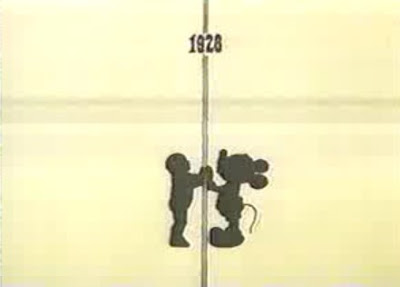 After several years working as art director on such films as Alexei Karaev’s Welcome (1986), Aleksandr Petrov’s first film as director was The Marathon (1988), which he co-directed with Michael Tumelya. This brief tribute to Walt Disney’s immortal creation Mickey Mouse possesses none of the breathtaking visuals for which Petrov would later become known, but it is nonetheless a powerful piece of work, even at just two minutes in length. The film was produced to celebrate the character’s 60th anniversary, and that Roy E. Disney and a group of American animators paid a visit to the USSR in 1988 probably gave some added incentive. By all reports, Disney was thrilled with the effort. While it was Korova (1989) – Petrov’s diploma work – that really established Petrov as an imminent animation genius (he received the first of his Oscar nominations), this earlier student short, by its potent simplicity, is well worth tracking down for all fans of the director.
After several years working as art director on such films as Alexei Karaev’s Welcome (1986), Aleksandr Petrov’s first film as director was The Marathon (1988), which he co-directed with Michael Tumelya. This brief tribute to Walt Disney’s immortal creation Mickey Mouse possesses none of the breathtaking visuals for which Petrov would later become known, but it is nonetheless a powerful piece of work, even at just two minutes in length. The film was produced to celebrate the character’s 60th anniversary, and that Roy E. Disney and a group of American animators paid a visit to the USSR in 1988 probably gave some added incentive. By all reports, Disney was thrilled with the effort. While it was Korova (1989) – Petrov’s diploma work – that really established Petrov as an imminent animation genius (he received the first of his Oscar nominations), this earlier student short, by its potent simplicity, is well worth tracking down for all fans of the director.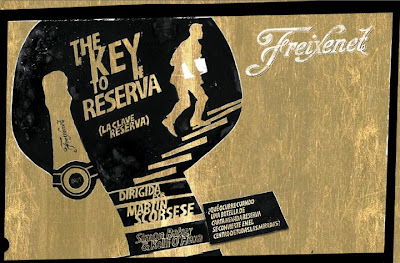 From one Hitchcock fan to another: Bravo, Marty Scorsese! Given the task of producing a commercial for Freixenet Wines, the prominent director enthusiastically crafted an endearing homage to the Master of Suspense, in the guise of a "rediscovered" Hitchcock script. The Key to Reserva (2007) is that very rare thing – an advertisement that is absolutely a joy to watch, so much so that you can easily ignore the advertising itself and consider the prized Freixenet wine-bottle just another of Hitchcock's unlikely MacGuffins. The film even tries to obscure the fact that it is merely a commercial, with Scorsese starring as himself in a documentary framing device that sees him excitedly boasting about his plans to film three fragmented pages from an unproduced Hitchcock script. One is hardly likely to fall for the ruse nowadays, but, when the short first emerged on the internet, I have no doubt that many people were swindled, even if the promise of Marty-doing-Hitch would have seemed simply too amazing to be true.
From one Hitchcock fan to another: Bravo, Marty Scorsese! Given the task of producing a commercial for Freixenet Wines, the prominent director enthusiastically crafted an endearing homage to the Master of Suspense, in the guise of a "rediscovered" Hitchcock script. The Key to Reserva (2007) is that very rare thing – an advertisement that is absolutely a joy to watch, so much so that you can easily ignore the advertising itself and consider the prized Freixenet wine-bottle just another of Hitchcock's unlikely MacGuffins. The film even tries to obscure the fact that it is merely a commercial, with Scorsese starring as himself in a documentary framing device that sees him excitedly boasting about his plans to film three fragmented pages from an unproduced Hitchcock script. One is hardly likely to fall for the ruse nowadays, but, when the short first emerged on the internet, I have no doubt that many people were swindled, even if the promise of Marty-doing-Hitch would have seemed simply too amazing to be true.
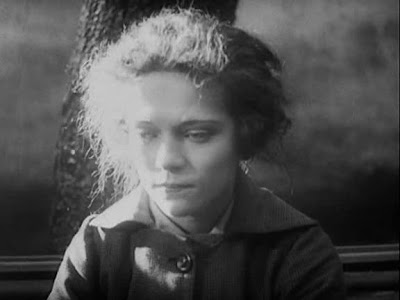 Dimitri Kirsanoff, born in Estonia but operating mostly in Paris, was heavily influenced by the theories of Soviet Montage. In his most famous short film, Ménilmontant (1926) – still frightfully obscure in most circles – he adheres to this style strictly, almost obsessively. His preference towards a brisk editing pace carries a unique vitality that is also seen in the work of Soviet masters Eisenstein and Vertov, who pioneered and perfected the technique of montage in the mid-to-late 1920s. But, nevertheless, I don't think it works quite as well here. The Battleship Potemkin (1925) and The Man with the Movie Camera (1929) – perhaps the two most recognised works of Soviet montage – utilise their chosen editing style to full effect precisely because they place greater emphasis on the collective over the individual, in accordance with traditional Communist ideology. There is deliberately no emotional connection attempted nor made between the viewer and any individual movie character, for that would be contrary to the filmmaker's intentions (interestingly, however, the montage fell out of preference from the 1930s in favour of Soviet realism).
Dimitri Kirsanoff, born in Estonia but operating mostly in Paris, was heavily influenced by the theories of Soviet Montage. In his most famous short film, Ménilmontant (1926) – still frightfully obscure in most circles – he adheres to this style strictly, almost obsessively. His preference towards a brisk editing pace carries a unique vitality that is also seen in the work of Soviet masters Eisenstein and Vertov, who pioneered and perfected the technique of montage in the mid-to-late 1920s. But, nevertheless, I don't think it works quite as well here. The Battleship Potemkin (1925) and The Man with the Movie Camera (1929) – perhaps the two most recognised works of Soviet montage – utilise their chosen editing style to full effect precisely because they place greater emphasis on the collective over the individual, in accordance with traditional Communist ideology. There is deliberately no emotional connection attempted nor made between the viewer and any individual movie character, for that would be contrary to the filmmaker's intentions (interestingly, however, the montage fell out of preference from the 1930s in favour of Soviet realism). Andrey Khrzhanovskiy's The Glass Harmonica (1968) is a very political piece of animation, and I know too little about the history of the Soviet Union to make any accurate interpretations of the film's meaning. However, I'm going to have a go at it, anyway. The craftsman of the glass harmonica arrives in a town whose citizens have become corrupted by and obsessed with the lure of money (symbolised by a single gold coin held in the hand of a shifty-looking bureaucrat). The love of wealth has transformed these people into grotesque and disgusting beasts, who roam throughout the streets thinking only of money. This, I'd imagine, would be a critique of capitalism, certainly something that one would expect from the Soviet Union in the late 1960s. When the craftsman returns to the town with his harmonica, the melodious tune of his instrument brings back the humanity of its inhabitants. They break out of their beastly cocoons, becoming beautiful human beings once again; one person offers his coat and hat to a homeless man.
Andrey Khrzhanovskiy's The Glass Harmonica (1968) is a very political piece of animation, and I know too little about the history of the Soviet Union to make any accurate interpretations of the film's meaning. However, I'm going to have a go at it, anyway. The craftsman of the glass harmonica arrives in a town whose citizens have become corrupted by and obsessed with the lure of money (symbolised by a single gold coin held in the hand of a shifty-looking bureaucrat). The love of wealth has transformed these people into grotesque and disgusting beasts, who roam throughout the streets thinking only of money. This, I'd imagine, would be a critique of capitalism, certainly something that one would expect from the Soviet Union in the late 1960s. When the craftsman returns to the town with his harmonica, the melodious tune of his instrument brings back the humanity of its inhabitants. They break out of their beastly cocoons, becoming beautiful human beings once again; one person offers his coat and hat to a homeless man. My first film from Rainer Werner Fassbinder is a nine-minute short, one of the director's earliest efforts. The film follows three youths, caught up in the rebellious counter-culture of the 1960s, who decide to supplement their meagre incomes (selling magazine subscriptions door-to-door) by orchestrating a home robbery. The three aspiring criminals – played by Christoph Roser, Marite Greiselis and Fassbinder himself – bust into the home of a frightened woman (Greta Rehfeld) and demand her money. The characters, particularly Fassbinder's Franz, do plenty of over-the-top posturing, no doubt in homage to the James Cagney style of acting that dominated gangster movies of the 1930s and 1940s (the film even references this sub-genre of Hollywood filmmaking, musing that "I'd like to see a gangster movie that ends well, for once"). The scene of a home invasion surprisingly called to mind A Clockwork Orange (1971), though I don't know how likely it is that Stanley Kubrick received inspiration from the amateur work of an emerging German director.
My first film from Rainer Werner Fassbinder is a nine-minute short, one of the director's earliest efforts. The film follows three youths, caught up in the rebellious counter-culture of the 1960s, who decide to supplement their meagre incomes (selling magazine subscriptions door-to-door) by orchestrating a home robbery. The three aspiring criminals – played by Christoph Roser, Marite Greiselis and Fassbinder himself – bust into the home of a frightened woman (Greta Rehfeld) and demand her money. The characters, particularly Fassbinder's Franz, do plenty of over-the-top posturing, no doubt in homage to the James Cagney style of acting that dominated gangster movies of the 1930s and 1940s (the film even references this sub-genre of Hollywood filmmaking, musing that "I'd like to see a gangster movie that ends well, for once"). The scene of a home invasion surprisingly called to mind A Clockwork Orange (1971), though I don't know how likely it is that Stanley Kubrick received inspiration from the amateur work of an emerging German director.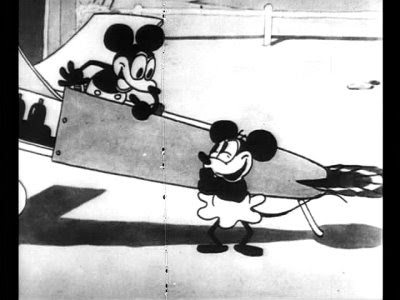 This is where it all began. Plane Crazy (1928) – and not Steamboat Willie (1928), as is often claimed – marks the humble debut of Mickey Mouse, perhaps the most recognisable and beloved cartoon character ever created. This little rodent was originally envisioned as a replacement for Oswald the Lucky Rabbit, a successful character designed by Walt Disney for Charles Mintz of Universal Studios. Mintz had demanded that Disney take a pay-cut, shortly after reminding him that he personally held copyright of Oswald, and had already contracted most of Disney's employees. To Mintz's surprise, the ambitious animator and businessman instead struck out alone, animators Ub Iwerks and Les Clark among the few who remained loyal to him. The first Mickey Mouse cartoon was released on May 15, 1928, in California, where its reception was initially rather lukewarm. The animation itself is not particularly notable, but the jokes are clever, funny and amusingly mean-spirited. Mickey's following would grow, however, and more than anybody – not even the forward-thinking Disney – could ever have anticipated.
This is where it all began. Plane Crazy (1928) – and not Steamboat Willie (1928), as is often claimed – marks the humble debut of Mickey Mouse, perhaps the most recognisable and beloved cartoon character ever created. This little rodent was originally envisioned as a replacement for Oswald the Lucky Rabbit, a successful character designed by Walt Disney for Charles Mintz of Universal Studios. Mintz had demanded that Disney take a pay-cut, shortly after reminding him that he personally held copyright of Oswald, and had already contracted most of Disney's employees. To Mintz's surprise, the ambitious animator and businessman instead struck out alone, animators Ub Iwerks and Les Clark among the few who remained loyal to him. The first Mickey Mouse cartoon was released on May 15, 1928, in California, where its reception was initially rather lukewarm. The animation itself is not particularly notable, but the jokes are clever, funny and amusingly mean-spirited. Mickey's following would grow, however, and more than anybody – not even the forward-thinking Disney – could ever have anticipated.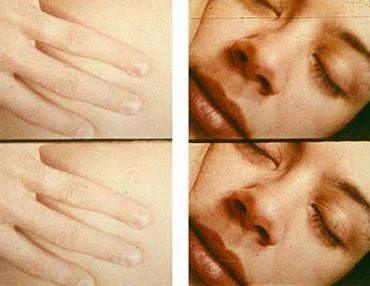 Quite a few years ago, I attended a secondary school excursion to the Melbourne Museum, where we focused primarily upon the science of the human body. As part of the tour, we also attended a screening for the IMAX film The Human Body (2001), which used some nifty film-making techniques to demonstrate the workings of our organs, bones and muscles. The documentary even delved into the subject of reproduction, though I couldn't help noticing that the newly-born infant emerged in an peculiar state of utter cleanliness. Avant-garde Stan Brakhage apparently had no such inclinations towards prudishness. Perhaps his most notorious film, Window Water Baby Moving (1959) {filmed in November 1958} documents in unflinching detail the birth of his first-born daughter, Myrrena Brakhage. Unlike the bewildering Mothlight (1963), this is a Brakhage film that one doesn't need to decipher; the editing and images tell the entire story, not just of a human birth, but of the tender emotional bond between husband and wife, parent and child, and the all-seeing lens of the movie camera.
Quite a few years ago, I attended a secondary school excursion to the Melbourne Museum, where we focused primarily upon the science of the human body. As part of the tour, we also attended a screening for the IMAX film The Human Body (2001), which used some nifty film-making techniques to demonstrate the workings of our organs, bones and muscles. The documentary even delved into the subject of reproduction, though I couldn't help noticing that the newly-born infant emerged in an peculiar state of utter cleanliness. Avant-garde Stan Brakhage apparently had no such inclinations towards prudishness. Perhaps his most notorious film, Window Water Baby Moving (1959) {filmed in November 1958} documents in unflinching detail the birth of his first-born daughter, Myrrena Brakhage. Unlike the bewildering Mothlight (1963), this is a Brakhage film that one doesn't need to decipher; the editing and images tell the entire story, not just of a human birth, but of the tender emotional bond between husband and wife, parent and child, and the all-seeing lens of the movie camera. Cinema was born as the short film. From the earliest days of Roundhay Garden Scene (1888) until the mid-1910s, films running less than one hour were the norm. Believe it or not, it was we Australians who broke the mould, producing the feature-length The Story of the Kelly Gang (1906) [only fragments of this film remain today, and have been excellently restored by the National Film and Sound Archive.
Cinema was born as the short film. From the earliest days of Roundhay Garden Scene (1888) until the mid-1910s, films running less than one hour were the norm. Believe it or not, it was we Australians who broke the mould, producing the feature-length The Story of the Kelly Gang (1906) [only fragments of this film remain today, and have been excellently restored by the National Film and Sound Archive. Just to get the ball rolling, here are my fifty favourite short films of all time, as of today. My interest skews slightly more towards animation than live-action (and you'll note a particular preference for Soviet animation), but I nonetheless think that it's a adequately eclectic selection:
Just to get the ball rolling, here are my fifty favourite short films of all time, as of today. My interest skews slightly more towards animation than live-action (and you'll note a particular preference for Soviet animation), but I nonetheless think that it's a adequately eclectic selection:





_poster.jpg)

